Sarah Sundin's Blog, page 266
March 31, 2017
Today in World War II History—Mar. 31, 1942
 75 Years Ago—Mar. 31, 1942: Indian Congress Party demands immediate and complete independence from the United Kingdom.
75 Years Ago—Mar. 31, 1942: Indian Congress Party demands immediate and complete independence from the United Kingdom.
Japanese take Toungoo, Burma, Christmas Island south of Java, and Bougainville in the Solomons.
In South Atlantic, Italian sub Pietro Calvi sinks US tanker T.C. McCobb, first US ship sunk by an Italian sub.
March 30, 2017
Today in World War II History—Mar. 30, 1942
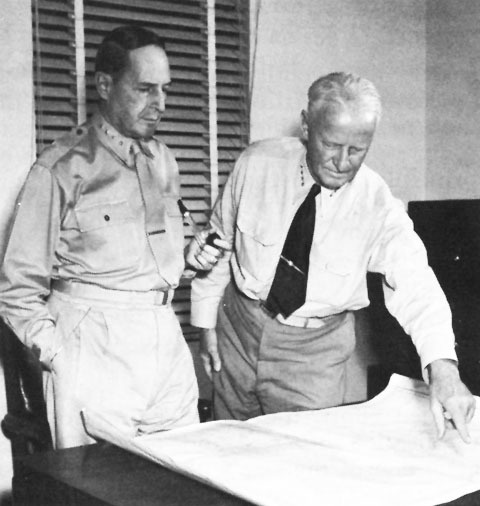
Gen. Douglas MacArthur and Adm. Chester Nimitz, 1942-1944 (US Government photo)
75 Years Ago—Mar. 30, 1942: Allies divide responsibilities for war theaters: US in charge of Pacific with Adm. Chester Nimitz over Pacific Ocean Area and Gen. Douglas MacArthur as Supreme Commander Southwest Pacific Area; Britain in charge from Singapore to the Mediterranean; US and UK to share responsibility in the Atlantic.
US Secretary of the Navy changes status of Coast Guard from a division to a service, analogous to Marine Corps.
March 29, 2017
Murder on the Moor by Julianna Deering – and Giveaway!
 Once again, Drew and Madeline Farthering find themselves in the middle of a mystery . . . and it’s a good one! An old school chum of Drew’s, who goes by the unflattering nickname of Beaky, invites the Fartherings to his Bloodworth Park Lodge on the Yorkshire moors to investigate the murder of the beloved village vicar.
Once again, Drew and Madeline Farthering find themselves in the middle of a mystery . . . and it’s a good one! An old school chum of Drew’s, who goes by the unflattering nickname of Beaky, invites the Fartherings to his Bloodworth Park Lodge on the Yorkshire moors to investigate the murder of the beloved village vicar.
A host of suspects emerge . . . Sabrina, aloof and too beautiful for her doting husband, Beaky. Rhys Delwyn, the rugged, brooding gamekeeper at Bloodworth Lodge. Jem Nealy, the village ne’er-do-well and suspected poacher. And many more.
Along the way, family secrets are unearthed and a haunting romance is discovered.
I keep saying this about the Drew Farthering Mysteries, but this one is my favorite! In Murder on the Moor, Julianna Deering explores some fascinating characters and tips expectations on their ears. As in the best mysteries, I suspected everyone and no one. I was thrilled that the actual culprit was high on my list . . . although I didn’t know why. Come for the clues and the mystery, but stay for the characters and a beautiful tale of sacrificial love that will touch your heart.
I ended up with a second copy of Murder on the Moor, so I’m giving away a copy! To enter the drawing, please leave a comment below. Giveaway ends Sunday, April 2, 2017 at 11 pm. I’ll post the winner on my blog Monday, April 3, 2017. US only please.
Today in World War II History—Mar. 29, 1942
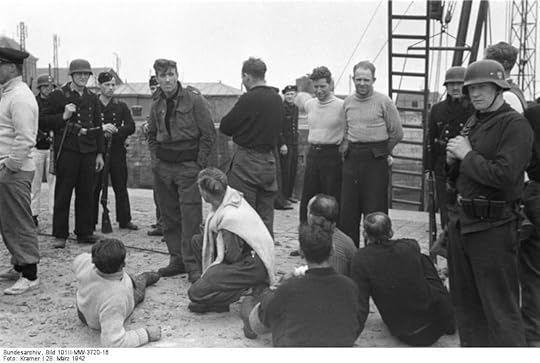
Germans guarding British prisoners of war, Saint-Nazaire, France, 28 Mar 1942 (German Federal Archive: Bild 101II-MW-3720-16)
75 Years Ago—Mar. 29, 1942: British announce plans for postwar semi-independence for India.
German Adm. Karl Dönitz moves U-boat Headquarters from St. Nazaire, France to Paris due to commando raids.
March 28, 2017
Today in World War II History—Mar. 28, 1942

HMS Campbeltown wedged in the dock gates of Saint-Nazaire, France, 28 Mar 1942 (German Federal Archive: Bild 101II-MW-3722-03)
75 Years Ago—Mar. 28, 1942: First RAF area bombing, against Lübeck, Germany; 520 killed, most of wooden city burns.
St. Nazaire Raid: British ram and destroy lock gates and dry dock at German base at Saint Nazaire, France with former US destroyer HMS Campbeltown laden with explosives, in conjunction with commando raid.
March 27, 2017
When Tides Turn Photo Tour Giveaway Winner
 Thank you for joining me last week on a photographic tour of the sights from When Tides Turn–from Boston, Massachusetts to Vermilion, Ohio to a German U-boat!
Thank you for joining me last week on a photographic tour of the sights from When Tides Turn–from Boston, Massachusetts to Vermilion, Ohio to a German U-boat!
If you missed the tour, come see the sights!
For the giveaway of the “Vintage Blossoms” candle from Vermilion and the “Women of WWII” sticky notes, I randomly drew a name from the 141 entries on the five blog posts and via email. And the winner is…
Steph J.! Steph, I’ll email you to get your mailing address. Congratulations!
Today in World War II History—Mar. 27, 1942
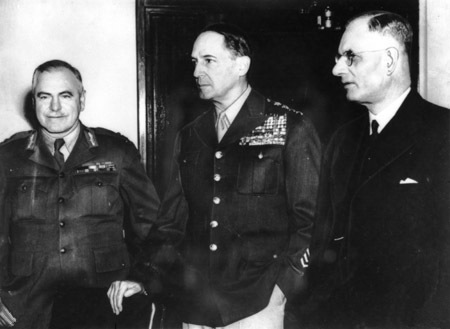
Generals Thomas Blamey and Douglas MacArthur, and Australian Prime Minister John Curtin, Australia, 26 Mar 1942 (Australian War Memorial)
75 Years Ago—Mar. 27, 1942: Gen. Sir Thomas Blamey assumes command of Australian forces.
US Navy approves convoys along East Coast, starting with “bucket brigades” April 1 and full convoys by May 5.
Congress grants free mail privileges for military personnel on first-class materials.
March 26, 2017
Today in World War II History—Mar. 26, 1942
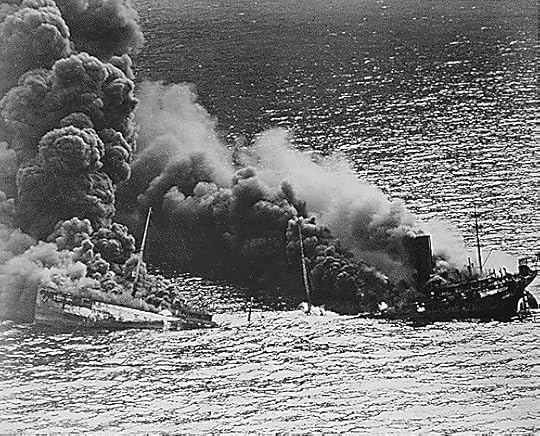
US tanker Dixie Arrow sinking after being torpedoed by German submarine U-71, off North Carolina, 26 Mar 1942 (US National Archives)
75 Years Ago—Mar. 26, 1942: Germany requires Jewish homes to be marked on the exterior.
Manuel Quezon, president of the Philippines, and his family are evacuated by B-17 to Australia.
US Navy and the Army Air Force agree to give the Navy command of aircraft operating over sea to protect shipping and hunt submarines.
Off North Carolina, U-71 sinks US tanker Dixie Arrow.
March 25, 2017
Today in World War II History—Mar. 25, 1942
 75 Years Ago—Mar. 25, 1942: US Naval Task Force 39 leaves Maine for Britain to protect convoys to Russia, relieving the Royal Navy to protect the Mediterranean and to invade Madagascar.
75 Years Ago—Mar. 25, 1942: US Naval Task Force 39 leaves Maine for Britain to protect convoys to Russia, relieving the Royal Navy to protect the Mediterranean and to invade Madagascar.
First Martin B-26 Marauder medium bombers arrive in a combat theater, at Brisbane/Archerfield AF, Australia.
March 24, 2017
When Tides Turn U-Boat Tour, Part 2 – and Giveaway
 To celebrate the release of When Tides Turn, this week I’m conducting a photo tour of some of the sights in the book—and I’m giving away:
To celebrate the release of When Tides Turn, this week I’m conducting a photo tour of some of the sights in the book—and I’m giving away:
“Vintage White Blossoms” candle from Vermilion, Ohio—Dan & Tess’s hometown.
“Women of WWII” sticky notes, including a WAVE (like Tess!), purchased at Pearl Harbor.
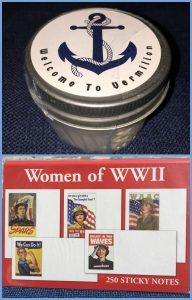 To enter, leave a comment below (US & Canada only please), and/or on the Tour of Boston and Tour of Vermilion posts and yesterday’s U-boat Tour post. You can earn extra entries by leaving a comment on each post. If you can’t leave a comment, please send me an email to enter. Giveaway ends Sunday, March 26, 2017 at 10 pm, Pacific Time. I’ll announce the winner here on Monday, March 27, 2017.
To enter, leave a comment below (US & Canada only please), and/or on the Tour of Boston and Tour of Vermilion posts and yesterday’s U-boat Tour post. You can earn extra entries by leaving a comment on each post. If you can’t leave a comment, please send me an email to enter. Giveaway ends Sunday, March 26, 2017 at 10 pm, Pacific Time. I’ll announce the winner here on Monday, March 27, 2017.
U-Boat Tour
In When Tides Turn, my fictional hero, Lt. Dan Avery, serves aboard the auxiliary carrier USS Bogue. The aircraft of the Bogue were the first to sink a German U-boat without assistance from surface ships. The escort carriers soon became the nuclei of “hunter-killer” groups, along with destroyers or destroyer escorts. These groups not only escorted convoys, but were sent to hunt down U-boats based on intelligence gleaned from intercepted and decrypted German Enigma messages and from radio direction-finding.
While researching escort carriers for this novel, I read one of the most thrilling and fascinating stories to come out of World War II—the capture of U-505 by the USS Guadalcanal group on June 4, 1944. Currently the U-505 is in a gorgeous display at the Chicago Museum of Science and Industry. When my husband and I had the honor of attending our son’s graduation from Navy boot camp at Great Lakes Recruit Training Center near Chicago this summer, there was only one item on my must-see list. After our son, of course.
Capture of the U-505—Part 2
On June 4, 1944, US Navy Task Group 22.3, led by the escort carrier USS Guadalcanal under the command of Captain Daniel Gallery, hunted down the German submarine U-505, damaged her, and forced the crew to abandon ship by 11:27 am. (Read Part 1 for a fuller account).
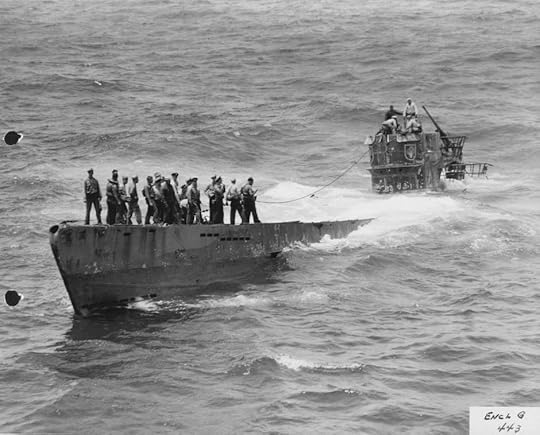
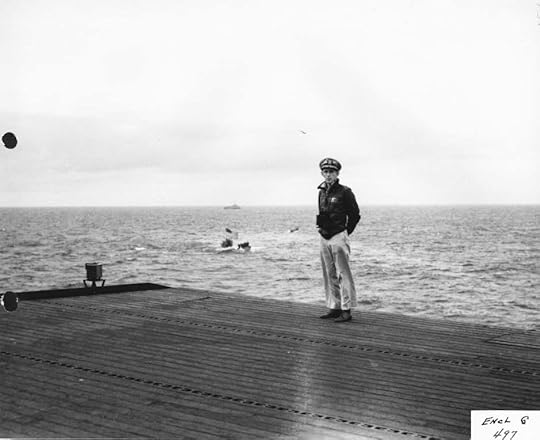
At 1230, a boarding party from the destroyer escort USS Pillsbury, led by Lt. (j.g.) Albert David—who won the Medal of Honor for his actions that day—arrived by motor whaleboat. David leapt from the whaleboat to the deck of the U-boat and attached a towline. Then he led a party of four men into the damaged sub—possibly rigged with explosive scuttling charges or booby traps—an extremely dangerous job.
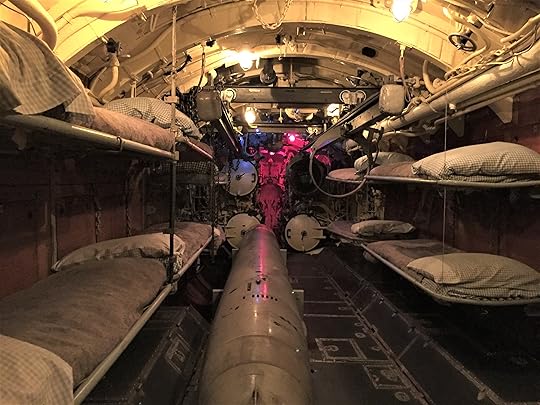

The men quickly closed valves and the sea strainer, which were letting seawater stream into the boat. At the same time, they seized papers and passed them to men outside. At 1240, a boarding party from the Guadalcanal joined them. They searched for scuttling charges, set up pumps to remove seawater, and captured the Enigma machine and codebooks.

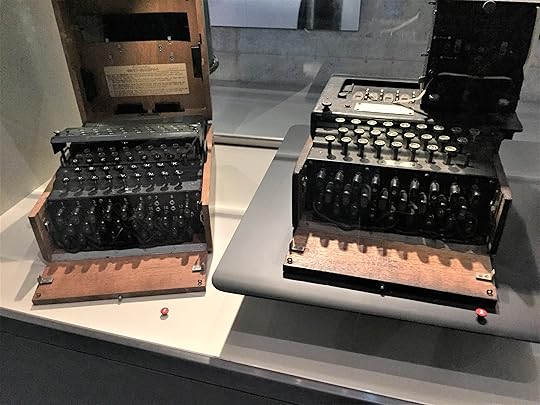
By 1415, the U-505 was stabilized and placed under tow to keep her afloat, since she was riding low in the stern. Captain Gallery and his prize set sail for Casablanca, but were later fueled at sea and directed to Bermuda to keep the capture secret.
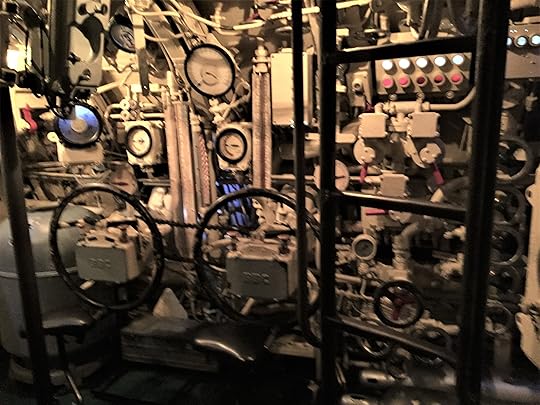

The next morning, the U-505 was riding even lower and was in danger of sinking. The controls for the damaged rudder were in the aft torpedo room. The hatch hadn’t been opened for fear of booby traps. Captain Gallery himself went over to the U-505, inspected the hatch door, decided it wasn’t rigged, and opened it. Then he put the rudder amidships, stabilizing the sub once again.
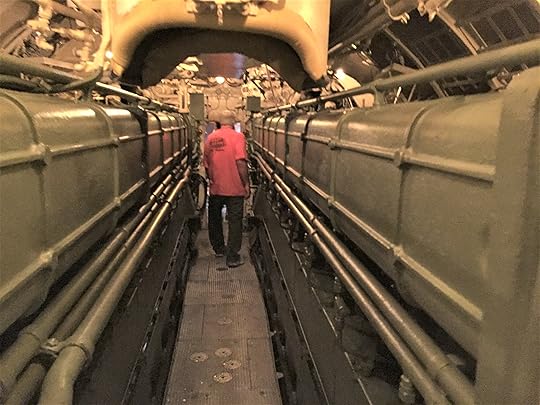
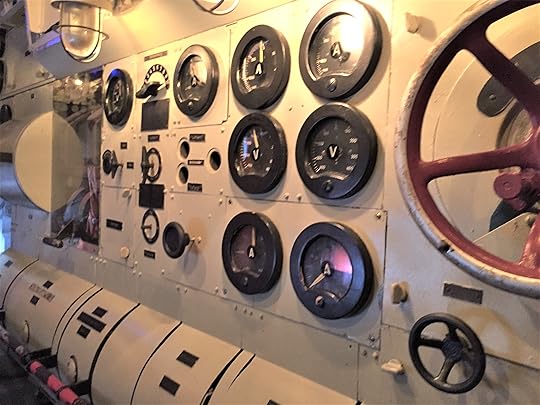
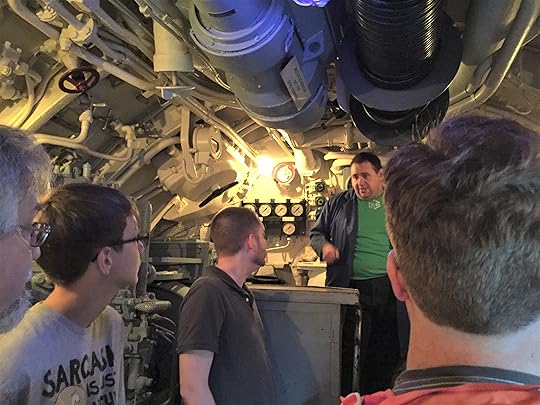
On June 19, the Guadalcanal arrived in Bermuda with the U-505, the first ship captured on the high seas by the US Navy since 1815. The prisoners were kept sequestered from other German prisoners so word wouldn’t get back to Germany. The crews of the entire task group were ordered to keep the incident secret for the duration of the war—a difficult feat considering how proud they were of their accomplishment. Yet all 3000 men kept that secret.
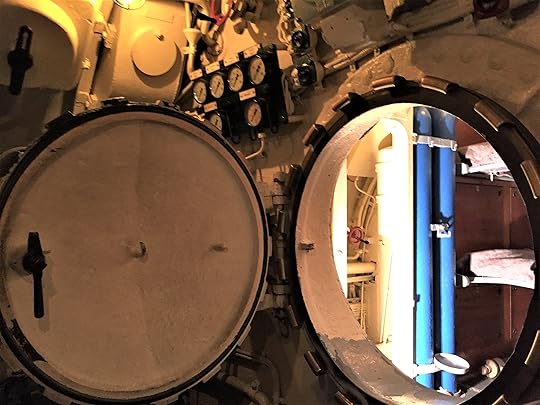
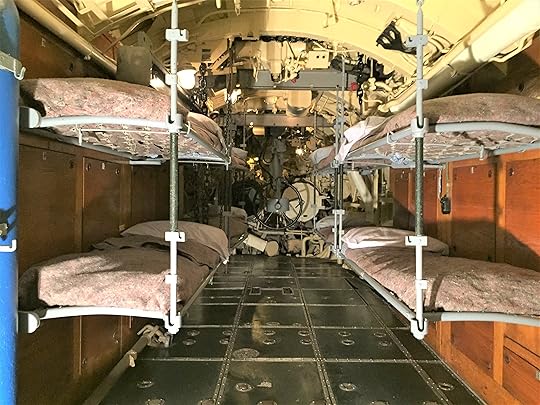
On May 16, 1945, after Victory in Europe Day, the United States announced the capture of the U-505. The sub was taken to various American ports for war bond drives, then languished for years after the war. Captain Gallery fought hard to prevent his prize from being scuttled along with other U-boats captured postwar, and in 1954 he succeeded in having the U-505 brought to his hometown of Chicago to be put on display at the Museum of Science and Industry. The journey was an engineering accomplishment of its own. The U-505 was displayed outside until 2004, when she was placed in her current underground exhibit, which is brimming with information and artifacts—well worth a visit!
See more sights from When Tides Turn!
References:
Wise, James E., Jr. U-505: The Final Journey. Annapolis, MD: Naval Institute Press, 2005.
Y’Blood, William T. Hunter-Killer: U.S. Escort Carriers in the Battle of the Atlantic. Annapolis, MD: Bluejacket Books, 1983.
http://www.uboatarchive.net/U-505.htm (Tons of primary source documents, logs, and photographs).



